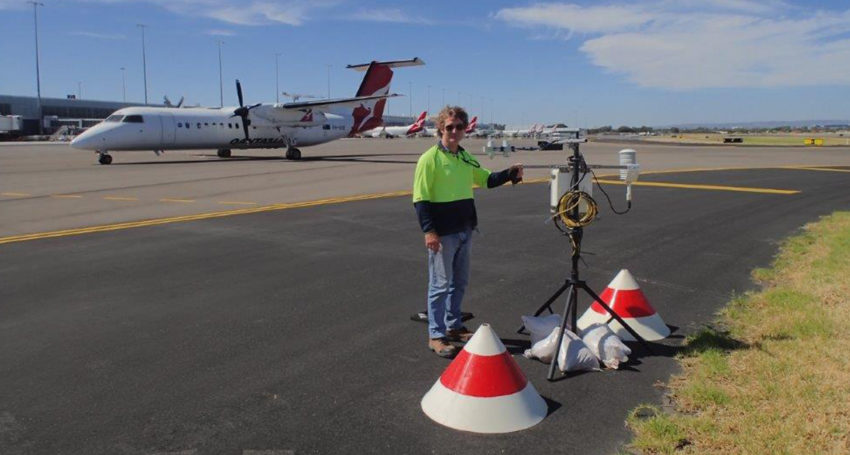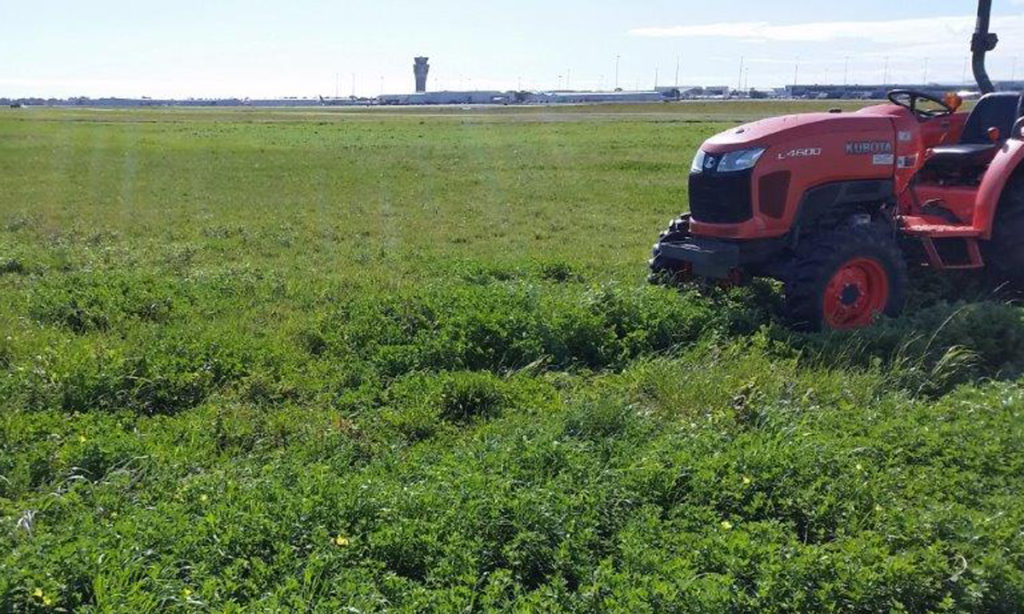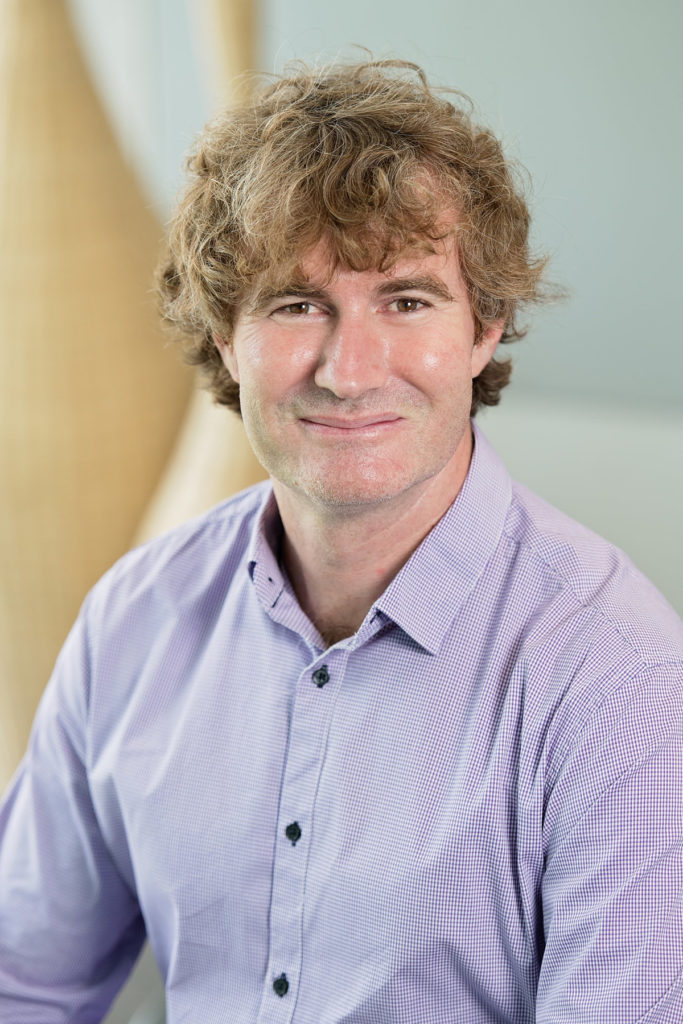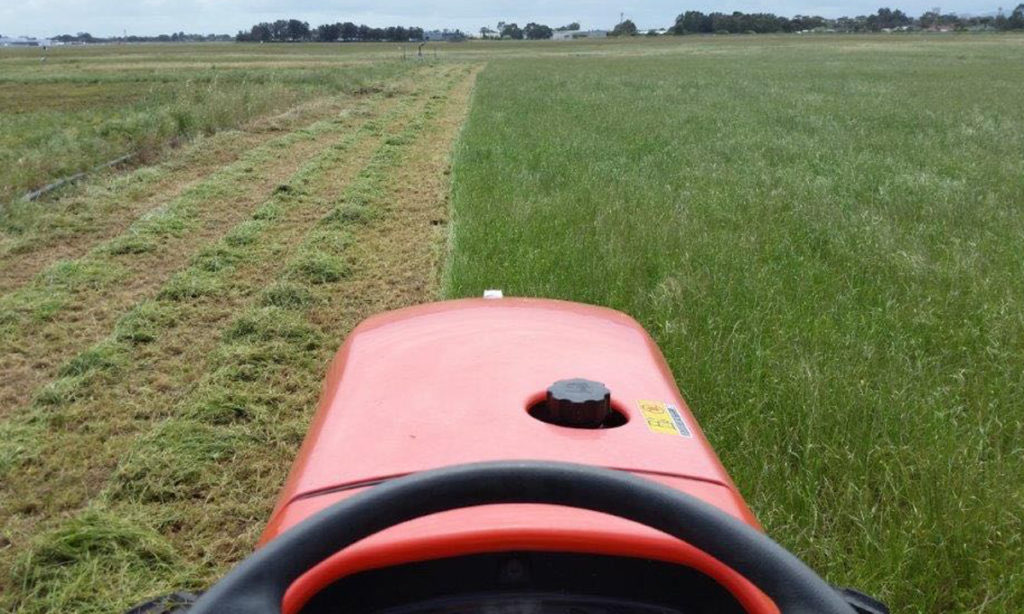Cooling crops become hot airport topic
Innovators
An innovative project that lowers runway temperatures by using recycled water to grow commercial crops at airports will be shared with global aviation leaders in Abu Dhabi this week.

Sign up to receive notifications about new stories in this category.
Thank you for subscribing to story notifications.

The world-first project is expected to generate strong interest from numerous airports in hot regions, especially those with busy long-haul schedules through the heat of the day.
Trials at Adelaide Airport in South Australia in conjunction with state-owned utility SA Water have shown that planting lucerne around runways can drop air temperatures by more than 3C on warm days and therefore improve the performance of departing airplanes.
In warmer, less dense air, planes must travel faster down the runway to produce the lift needed for take-off. When a runway lacks the distance required to reach these speeds, a plane’s weight must be reduced by removing passengers, luggage and cargo. This reduces profit for the airline.
There is also a threshold temperature above which some smaller domestic aircraft simply cannot take-off.
Adelaide Airport is working up a business case to extend the project from its current 4ha trial plot to 200ha of airport land. The lucerne is being irrigated by stormwater captured as part of SA Water’s aquifer storage program but will also include recycled water from SA Water if the project is extended.
SA Water Environmental Opportunities Manager Greg Ingleton, who developed the Adelaide Airport concept, will present the findings to more than 1000 delegates at the Airports Council International’s Airport Exchange, one of the aviation industry’s peak annual conferences.

The trial lucerne planting at Adelaide Airport has proven to reduce ambient air temperatures by more than 3C on warm days.
Ingleton’s presentation will be part of the Airport Development and Sustainability stream tomorrow (Tuesday, November 26), the middle day of the three-day conference.
He said the aim of the presentation was to further raise awareness about the Adelaide trial and generate interest in other locations.
“The main aim is to present the facts and figures to the airport stakeholders from around the world and to potentially raise the opportunity to explore the implementation at other airports with us,” Ingleton said.
“One of the interesting things to come back from the recent aircraft performance analysis was because Adelaide doesn’t have a busy schedule in the heat of the afternoon, particularly for international flights, the benefit is modest compared to what it could be at other airports where it is a bit hotter and they’ve got a busier schedule during those peak periods particularly for those larger long-haul planes.

Greg Ingleton. Picture: Brad Griffin
“We’re also investigating the ability to create carbon credits from growing the crops, demonstrating carbon sequestration whereby the plants absorb CO2 and use it as fuel for growth by locking it in the soil.”
Ingleton said the hot daytime temperatures and high air traffic volumes experienced in the Middle East made Abu Dhabi an ideal location to be discussing the project.
“Ultimately because of where the conference is being held a lot of the attendees will be from some of these Middle Eastern countries where they do have pressure on their airports to function well, particularly as climate change kicks in and the risk of impacts on aircraft performance, payloads and cancellations increase,” he said.
“The extensive hard surfaces and cleared land around airports means they can often become sources of increased heat, which impacts both terminal and airside operations.”
Adelaide Airport is the fifth-largest domestic airport and sixth-largest international airport in Australia and processes more than 8 million passengers annually.
It has the potential for up to 200ha of lucerne and a further 50-100ha of irrigated turf around the main runway and other infrastructure.
Adelaide is known for its hot, dry summers. The city has experienced 12 days in the first three months of 2019 where daytime temperatures exceeded 37C, including a maximum temperature of 46.6C on January 24.

The 4-hectare Adelaide trial site is 600 metres south of the airport’s main runway. A number of grass species were initially tried including tall fescue, couch and kikuyu but lucerne, which can be cut into hay and sold as a premium stock feed, had the greatest impact on ambient temperatures.
During the study, which has been running for three years, between 12 and 15 millimetres of recycled suburban stormwater was applied to the area up to three evenings a week, with more than 40 temperature and humidity sensors monitoring conditions in the irrigation area, and the persistence of cool air outside of the test zone.
This has led to a reduction in average ambient air temperatures in and around the irrigation area of more than 3C on warm days.
“Our recent economic analysis, which was based on an expansion of the irrigation area to 200ha, suggests innovative initiatives like this can provide a range of operational efficiencies and wider benefits for airports, and we’re hoping these findings will turn a few heads in Abu Dhabi,” Ingleton said.
“The beauty of it from an agricultural production perspective is that the business case stacks up so the cooling is actually free and I think that’s important because any benefit you get from the cooling is a bonus on top of the revenue on the agribusiness side of it.”
Jump to next article



